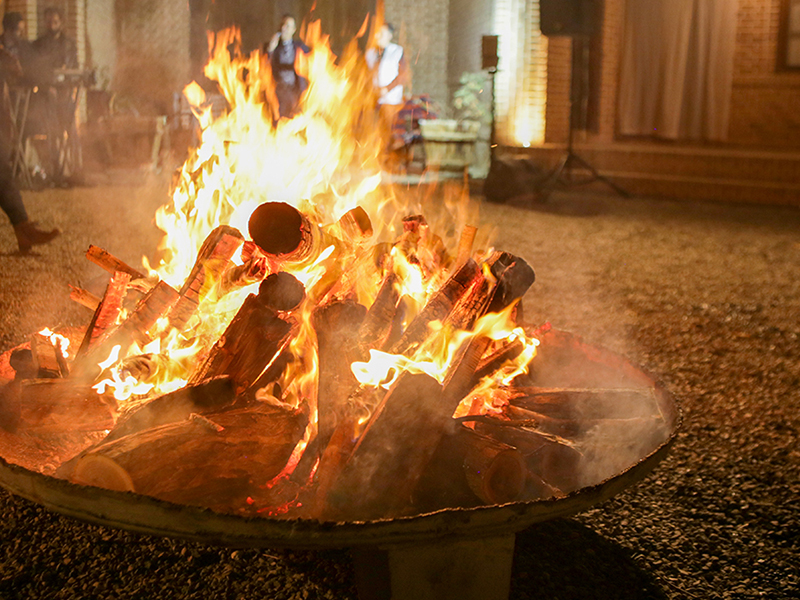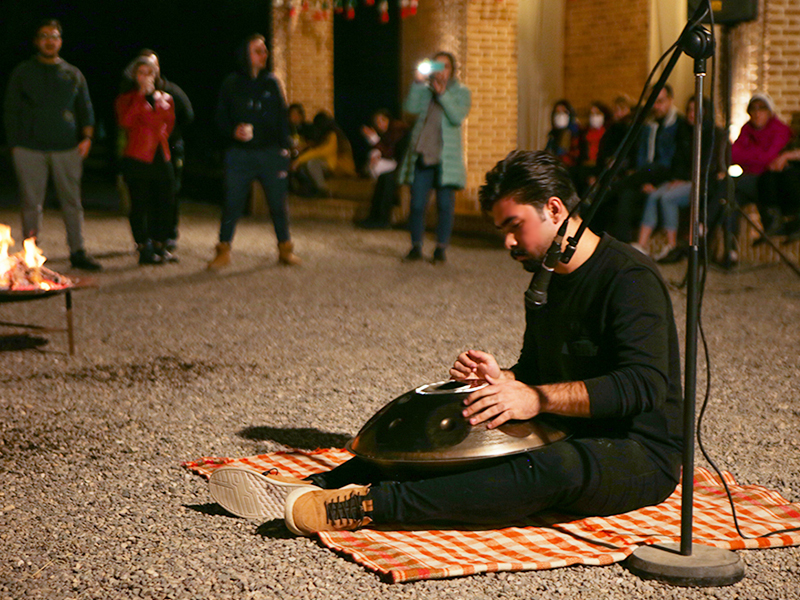Sadeh Festival in Iran (History, Meaning, Date, Rituals)
Among the ancient festivals of Iran, the Sadeh Festival is important, which can be compared with the historical importance of Nowruz. While its roots are considered to be religious and related to Zoroastrianism, the extensive research of historians has promoted the Sadeh Festival to the status of a national celebration in ancient Iran.
Today, this festival is still celebrated in different parts of the country and attracts enthusiastic participation from people in different communities. The main centers for Sadeh celebrations are the cities of Tehran, Kerman, and Yazd. In these cities, this festival is held by Zoroastrians living in these provinces with the active participation of local communities.
Whether you are curious about the rituals and history or simply want to experience the vibrant atmosphere of Sadeh, join us as we explore this ancient and cherished celebration in the following sections of this article.
Sadeh Festival History
The Sadeh Festival has a rich history that is deeply rooted in the ancient traditions of Iran, and its roots go back more than two thousand years. This festival, which is held on the tenth day of Bahman, commemorates the legendary discovery of fire by King Hushang.
Sadeh, which was initially associated with Zoroastrianism, became a national holiday in ancient Iran, symbolizing the victory of light over darkness. In the past, it had a prominent place along with other important ceremonies such as Nowruz and Mehregan.
Today, despite the change in the scale of the event, this festival is still a testimony to the enduring cultural heritage and collective spirit of the Iranian people.
Participants gather around the fire, engage in music and storytelling, and collectively celebrate the symbol of fire, fostering a sense of unity and connection with their ancient roots.
Sadeh Meaning
There are different narratives about the naming of the Sadeh Festival. One of the narratives connects the celebration with the number 100 and considers the 10th day of Bahman as the 100th day after the beginning of the winter season, which traditionally started at the beginning of Aban.
In the old days, the first day of Aban was the beginning of the cold season. There are 50 days and 50 nights left from the 10th day of Bahman to early spring, which makes a total of 100 nights.
According to this theory, due to the lengthening of night and day hours after the 10th of Bahman, days and nights are counted separately from this date onwards.
Sadeh Festival Rituals
This festival is alternately known as Fire Festival or Winter Festival, and in some parts of the country, it is referred to as ” Sadeh Sazi”.

The most prominent symbol of the Sadeh Festival is fire, around which Zoroastrians gather to symbolize the power and greatness of Ahura Mazda.
Participants work together to gather firewood to light the symbolic flame. Fire plays a significant role in all Zoroastrian ceremonies, and its followers hold it in high esteem.
Another feature of the Sadeh festival is the Zoroastrian congregation, which creates intimacy among people.
In the past, this festival was celebrated with a lot of joy and dancing, with the lighting of fire on top of the roofs and high points of cities and villages, creating a happy and universal atmosphere.
Sadeh Festival Date
The Sadeh festival stands out as one of the most important festivals in the world of Zoroastrianism, which is held on the tenth day of Bahman, called “Aban Rooz” or “Aban Day.”
In this celebration, Zoroastrians express their admiration for Ahura Mazda, the supreme god, and perform group music. Reading excerpts from the Shahnameh (Book of Kings) and storytelling are also common practices in this ancient celebration.
In the past, Sadeh had a prominent place among the ceremonies of ancient Iran, along with Nowruz and Mehregan, although nowadays, its widespread celebration has decreased.
Nevertheless, the Sadeh still retains its significance for Zoroastrians around the world.
Why Is Sadeh Celebrated?
The celebration of Sadeh refers to a period of 100 days before the harvest season. This time, which coincides with the tenth day of Bahman, was chosen as the occasion for holding the festival.
Historical records, including Abu-Rayhan Biruni, indicate a connection between the Sadeh and the number 100. However, some historians believe that the naming of the festival is not directly related to the number 100.
According to this view, in the Avestan language, Sadeh means the rising of the sun and its ascent. As the important 40-day cold period ends on the 10th of Bahman, the earth begins to warm, heralding fertility and the beginning of spring.

Ancient Iranians celebrated the conclusion of the large cold spell and the beginning of the smaller one on this day with the Sadeh festival, using fire to symbolize the warming of the earth and the approach of spring.
Sadeh Festival in Iran
The Zoroastrian Mid-Winter Festival is held in many cities of Iran, with special emphasis on Yazd province, where a significant population of Zoroastrians live. Among the notable cities hosting the big celebrations of the Sadeh, the following can be mentioned:
Yazd
Yazd is one of the primary centers of the Sadeh Festival in Iran. This festival is held in Rahmat Abad fire temple, and thousands of people from all over the country participate in it.
Kerman
Kerman is another key location for Sadeh festivities. The celebration unfolds at the Badagh Abad Garden, where people engage in activities like lighting fires, pyrotechnics, and singing to commemorate the day.
Tehran
Even in the bustling capital city of Tehran, Sadeh is celebrated at the Vahranoud Fire Temple. This event sees the participation of Zoroastrians and other Iranians, creating a festive atmosphere that resonates with the spirit of the ancient celebration.
Sadeh Festival Food
Sadeh Festival, a joyous celebration in Iran, is accompanied by a delightful array of traditional foods that add flavor to the celebrations. Families and communities come together to enjoy a feast that marks the transition from winter to spring.
The Sadeh menu often includes a variety of seasonal dishes, with an abundance of fresh fruits like pomegranates and nuts.
Traditional Persian sweets, such as gaz (a nougat-like confection) and ajil (a mix of dried fruits and nuts), are also commonly shared during this celebration.
Additionally, participants indulge in hearty meals that symbolize the abundance of the upcoming harvest season.
The act of sharing these delicious foods further strengthens the sense of community and togetherness that defines the spirit of the Sadeh Festival.
Sadeh Festival Facts
Sadeh Festival, an ancient celebration in Iran, is filled with fascinating facts that highlight its cultural richness. Held on the 10th day of Bahman, it marks the end of winter and the anticipation of spring.

The festival has its roots in Zoroastrianism, one of the world’s oldest monotheistic religions, and commemorates the legendary discovery of fire by King Hushang.
Sadeh is not only celebrated in various cities across Iran, with Yazd being a major center, but it also draws participation from Zoroastrians around the world.
The name “Sadeh” itself, in the Avestan language, signifies the rising of the sun and its ascent. Participants gather around bonfires, sing traditional songs, and share in the joy of communal festivities.
Igniting the Fire
As the sun sets, white-robed Zoroastrian priests cast shadows across the landscape, participating in a beautiful ceremony. Whispers of sacred verses from the Avesta emanate as they hold a bundle of twigs, one hand gripping the offering and the other clutching a tulip flower.
In the procession, a group of young people, also dressed in white, carry torches next to the priests. They move in a circular motion around the firewood, and finally, the leading priests with a fire-holder and youths with lighted torches approach from each side and light the fire.
The fire brought from the fire temple early in the morning is the vital element used to light the branches.
Final Word
In conclusion, the Sadeh Festival is a vibrant and magnificent celebration that offers a unique look at Iran’s beautiful heritage. This celebration of light and fire, with two thousand years of roots, is a symbol of the victory of heat over the cold of winter and is an excellent example of the endurance of Iranian culture.
As the Sadeh 2024 celebration approaches, consider the attraction of traveling to Iran to participate in this original cultural celebration. Alternatively, you can enjoy this spectacular celebration by following the news and enjoying the fascinating photos, allowing you to share in the joy and beauty of this ancient celebration from anywhere in the world.
Are you planning to travel to Iran and looking for an Iran resort? Consider Matinabad Eco-resort.





Leave a Reply
Want to join the discussion?Feel free to contribute!